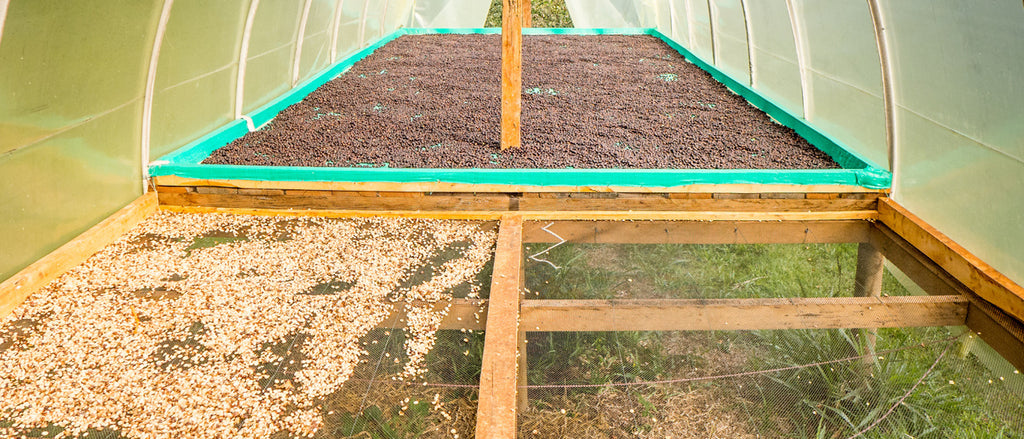Du grain à l'infusion : l'art de la culture, de la récolte et de la torréfaction du café
Pour beaucoup d'entre nous, une tasse de café chaud le matin est un élément indispensable de notre routine quotidienne. Mais vous êtes-vous déjà demandé quel est le chemin parcouru par le modeste grain de café avant d'atteindre votre tasse ? Des vastes plantations de café au processus complexe de torréfaction, explorons le monde fascinant de la culture, de la récolte et de la torréfaction du café.
Culture du café : prendre soin des grains
Le voyage du café commence dans les régions tropicales, souvent appelées la « ceinture du café », qui s'étend sur les pays situés autour de l'équateur. Les caféiers les plus couramment cultivés sont l'arabica et le robusta. Les caféiers prospèrent dans des conditions spécifiques, nécessitant une altitude élevée, des températures constantes, des précipitations abondantes et un sol bien drainé.
Les producteurs de café prennent soin de leurs plantes avec soin, en veillant à la fertilité adéquate du sol, en prévenant les maladies et en gérant l'ombre et l'exposition au soleil. Il faut des années pour que les plants de café mûrissent et produisent des fruits, ce qui rend la patience et l'expertise essentielles dans le processus de culture.

Récolte : sélection des grains parfaits
Les cerises de café, le fruit du caféier, sont récoltées avec soin pour garantir des grains de la plus haute qualité. Il existe deux méthodes principales : la cueillette sélective et la cueillette en bandes.
La cueillette sélective consiste à cueillir à la main uniquement les cerises mûres, ce qui nécessite plusieurs passages dans la plantation. Cette méthode produit des fèves au goût et à l'arôme optimaux, mais elle demande beaucoup de travail. En revanche, la cueillette en bandes consiste à récolter toutes les cerises d'une branche en une seule fois. Bien que ce processus soit plus rapide, les fèves obtenues peuvent être de qualité légèrement inférieure.

Traitement : dévoiler les trésors cachés
Après la récolte, les cerises de café subissent un traitement pour séparer les précieux grains de café du fruit. Il existe trois méthodes courantes : le processus de lavage, le processus naturel et le processus au miel.
-
Procédé de lavage : cette méthode consiste à retirer la peau extérieure et la pulpe des cerises à l'aide d'eau et de fermentation. Elle permet d'obtenir des fèves propres et brillantes avec une acidité vibrante.
-
Procédé naturel : Dans cette méthode, les cerises sont séchées avec leurs fruits intacts. La chaleur du soleil et le flux d'air transforment les cerises en fruits secs, semblables à des raisins secs. Le traitement naturel fait ressortir des saveurs fruitées et vineuses, ainsi qu'un corps plein.
-
Procédé de fabrication du miel : Ce procédé se situe entre les méthodes lavées et naturelles. Les cerises sont partiellement lavées, laissant une partie de la pulpe du fruit intacte pendant le processus de séchage. Il permet d'obtenir des fèves d'une douceur et d'une complexité uniques.

Torréfaction : libérer les arômes et les saveurs
La torréfaction est un art qui transforme les grains de café verts en grains aromatiques et savoureux que nous connaissons bien. Au cours du processus de torréfaction, les grains subissent une série complexe de réactions chimiques qui développent leur goût, leur arôme et leur couleur.
Le processus de torréfaction comprend trois étapes principales : le séchage, le brunissement et le développement. Au début, les fèves libèrent de l'humidité et acquièrent une couleur jaunâtre. À mesure que la température augmente, les fèves subissent une réaction de Maillard, deviennent brunes et développent des arômes. Enfin, les fèves atteignent le niveau de torréfaction souhaité, allant du clair au foncé, selon le profil aromatique souhaité.

Le parcours depuis la plantation de café jusqu'à votre tasse est un travail d'amour et de précision. La culture, la récolte et la torréfaction du café nécessitent un soin et une expertise méticuleux pour garantir une qualité et des saveurs optimales. Comprendre ce processus dévoile la riche histoire qui se cache derrière cette simple tasse de café que nous dégustons chaque jour.
Alors, la prochaine fois que vous siroterez votre boisson préférée, prenez un moment pour apprécier le voyage de ces humbles grains de café et les mains passionnées qui les ont nourris de la graine à la gorgée.







9 commentaires
iced coffee recipe
WONDERFUL SMELL, WONDERFUL TASTE!
Tres bien.